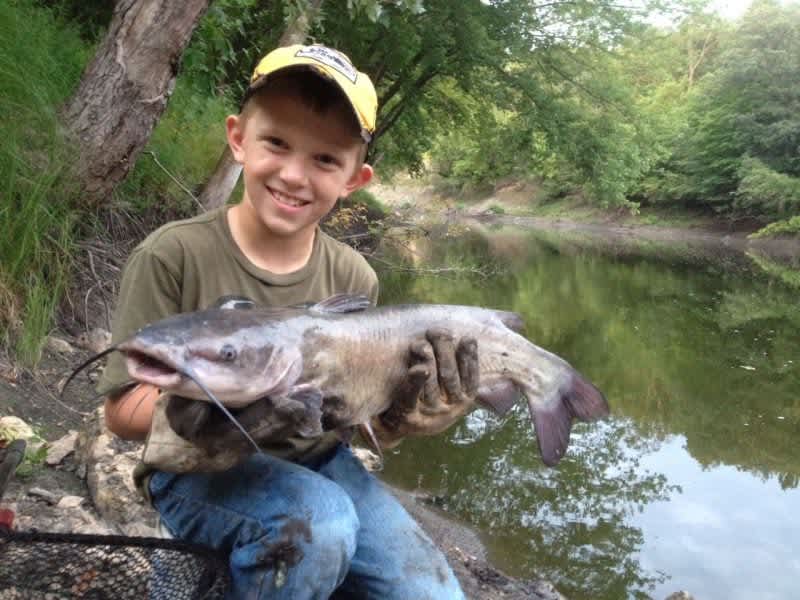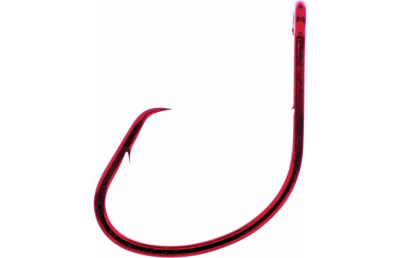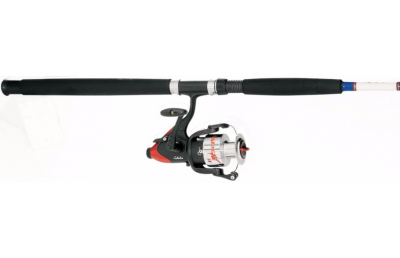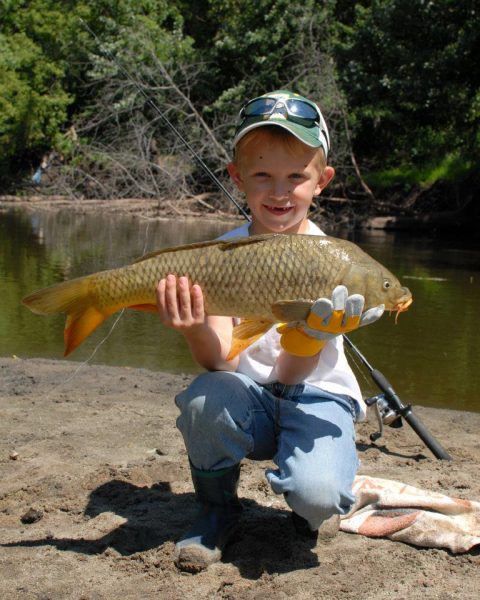‘Crawlers + Channel Catfish = Summer Fun
Dave Maas 07.07.16

In many small rivers throughout North America, channel cats are plentiful and – even better – they’re often willing biters. And unlike sunfish and crappies, which are also numerous and fairly easy to catch, channel cats grow large enough to test the strength and endurance of most any angler.
Two Simple Systems
Depending on the conditions, it’s best to use one of two simple rigs for targeting channel cats.
The first is as basic as it gets: Tie a size 1/0 Real Catfish Gear circle hook on your line and attach enough split-shot 1 foot up from the hook to keep the rig in place on the bottom.

Pinch a nightcrawler in half and then run the hook through the worm enough times so only an inch or two of worm is left dangling free. Cast this rig into deep outside turns of small rivers, then place a medium-power King Kat E-glass spinning rod in a Y-stick after the rig settles on the bottom.

Reel in enough line so you can watch the bow in your line for subtle strikes. Line and hook tip: Choose mono such as 8- or 10-pound-test Suffix Elite High-Vis Yellow or Trilene XT Solar for maximum visibility, and move up to a size 3/0 circle hook if channel cats are larger than 5 pounds.
If you’re losing too many bottom rigs due to snags, change to a slip-bobber system. You can utilize the same size 1/0 circle hook, but before attaching the hook and sinkers, place a bobber-stop on the line, followed by a small bead, then a slip-bobber, followed by the sinkers and hook. Experiment with bobber-stop depth, starting shallow and working deeper if you aren’t getting strikes. A slip-bobber system works especially well just upriver from visible log jams; simply cast out the rig and let the current take the slip-bobber to the log jam. Engage your reel before the rig gets to the log jam, then let the crawler scent move into the cover with aid of the current. Slip-bobber tip: Make sure you attach enough split-shot so your line easily slips through the bobber until reaching the bobber-stop.
In most small rivers, the outside bends around log jams are only 5-8 feet deep, so start at about 4 feet with your bobber-stop and work deeper from there. Because you’re fishing so close to log jams, it pays to use a bit heavier line (say 12-pound test instead of 8-pound) to prevent larger channel cats from escaping into the wood.

In addition to channel cats, you’ll sometimes catch suckers, carp and – depending on the river – even the occasional walleye or smallmouth bass on a nightcrawler. That’s what’s so much fun about fishing small rivers; you never know what species is trying to steal your ‘crawler!
This article was produced in cooperation with Cabela’s.

